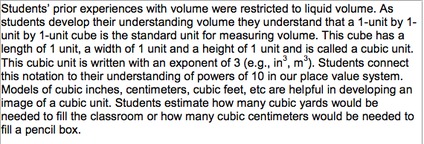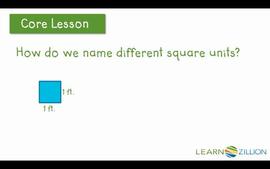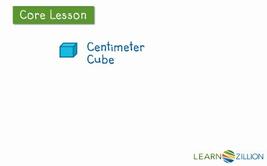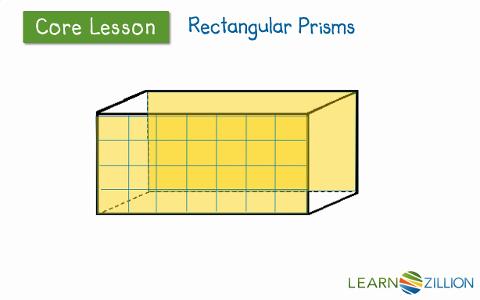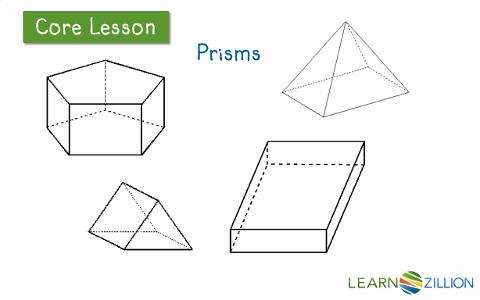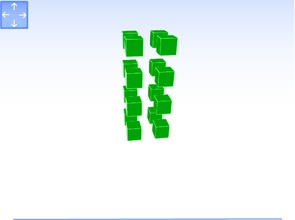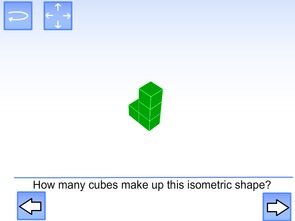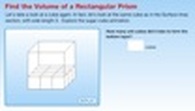Volume
I can understand volume. 5.MD.3
5th graders recognize volume as an attribute of solid figures and understand concepts of volume measurement.
a. A cube with side length 1 unit, called a ―unit cube, is said to have ―one cubic unit of volume, and can be used to
measure volume.
b. A solid figure which can be packed without gaps or overlaps using n unit cubes is said to have a volume of n cubic units.
5th graders recognize volume as an attribute of solid figures and understand concepts of volume measurement.
a. A cube with side length 1 unit, called a ―unit cube, is said to have ―one cubic unit of volume, and can be used to
measure volume.
b. A solid figure which can be packed without gaps or overlaps using n unit cubes is said to have a volume of n cubic units.
